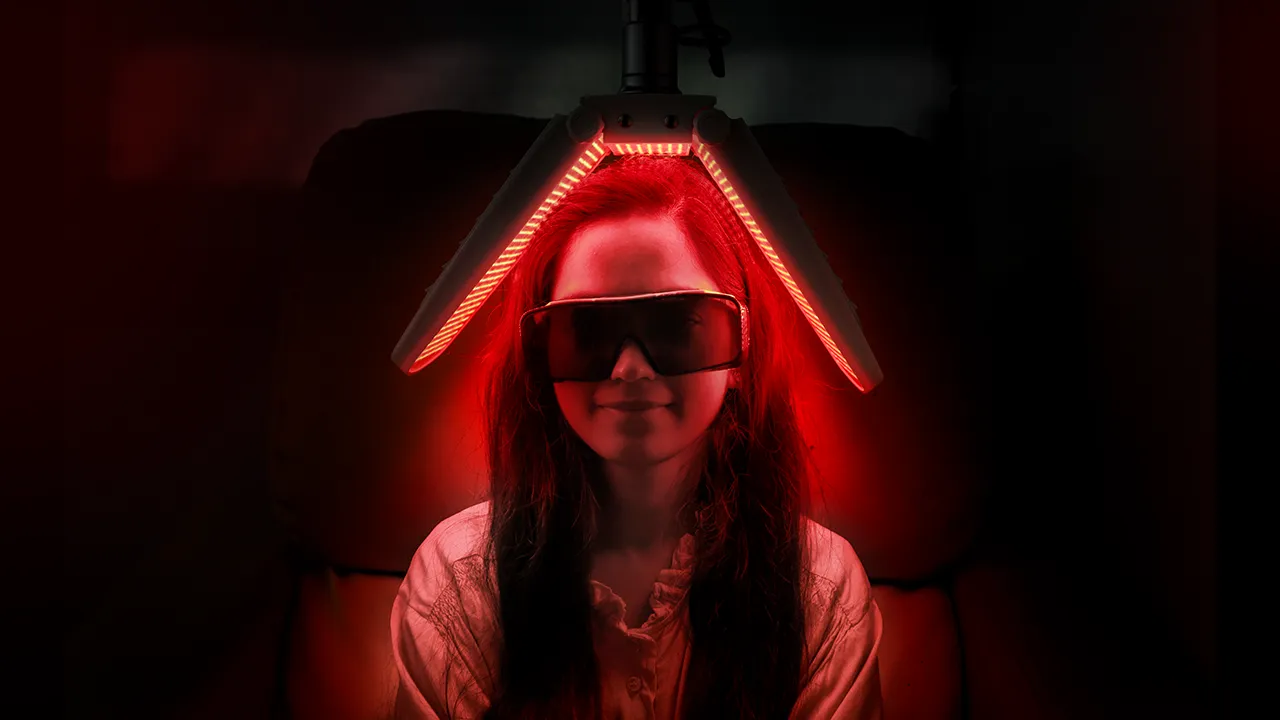Low Laser Light Therapy

Low Laser Light Therapy For Hair Loss
Low Laser Laser Therapy (LLLT) has a non-invasive treatment modality for individuals grappling with hair loss and hair thinning. This innovative approach, also known as low-level light therapy, harnesses the therapeutic potential of low-level lasers or light-emitting diodes (LEDs) to stimulate hair follicles and promote hair regrowth.
- Low-intensity light is called low-level laser therapy (LLLT) which stimulates cellular activity in tissues.
- The photons of light delivered during the therapy are absorbed by mitochondria, the energy-producing components of cells. This interaction is thought to optimize cellular function, particularly in follicular cells, leading to improved ATP (adenosine triphosphate) production. The boost in cellular energy is theorized to activate dormant hair follicles, promote hair growth, and extend the lifespan of existing hair.
- the application of low-level lasers or LEDs directly to the scalp. These devices emit red or near-infrared light at specific wavelengths, that promotes tissue repair and regeneration. The overall effect of LLLT on the body is called photobiomodulation
- Unlike high-power lasers used in surgical procedures, the low-level lasers employed in LLLT do not produce heat and are considered safe for regular use.
- LLLT has been reported to stimulate hair growth in men and women with androgenetic alopecia (AGA) and was approved by the US FDA in 2007.
- It is assumed to stimulate anagen phase re-entry in telogen hair follicles (HFs), prolong the duration of the anagen phase, and increase rates of proliferation in active anagen HFs. In addition, it also helps to promote reparative regeneration, which occurs during wound healing, and physiological regeneration, which occurs during the hair cycle, which relies heavily on cell proliferation.
- These laser actions may normalize the physiological regeneration of scalp HFs affected in various hair loss disorders such as male and female AGA, alopecia areata (AA), and chemotherapy-induced hair loss.
- Clinical studies and trials have provided promising evidence supporting the efficacy of LLLT in treating various types of hair loss, including androgenetic alopecia. Research suggests that regular and consistent use of low-level lasers can lead to increased hair density, improved hair thickness, and a reduction in hair shedding. The non-invasive nature of LLLT further enhances its appeal, making it a suitable option for individuals averse to surgical interventions or pharmacological treatments
- LLLT devices are available in various forms, including laser caps, helmets, combs, and hoods, allowing individuals to incorporate the therapy into their daily routines conveniently. This flexibility in device options contributes to the accessibility and user-friendly nature of LLLT as a home-based treatment.
- LLLT has demonstrated a favorable safety profile with minimal reported side effects. The absence of thermal damage ensures that the therapy does not cause discomfort, irritation, or damage to the scalp. This makes LLLT a well-tolerated and low-risk option for long-term use.
- While LLLT can be used as a standalone treatment, it is also commonly integrated into comprehensive hair loss management plans. Combining LLLT with other interventions, such as topical medications, and PRP therapy, may enhance overall efficacy and provide a synergistic approach to addressing hair loss from multiple angles.
- As with any hair loss treatment, individual responses to LLLT may vary, and results may take time to become noticeable. Patience and consistent use are key factors in maximizing the potential benefits of LLLT. Additionally, consulting with a healthcare professional or expert trichologist can help determine the appropriateness of LLLT based on individual hair loss patterns, causes, and overall health.
- In our center, Low-Level Laser Therapy (LLLT) stands as a non-invasive and promising option for individuals seeking effective solutions to combat hair loss. We use LLLT along with PRP treatment and other medications to improve hair fall problem and as a maintenance after hair transplant surgery. If you are seeking to solve your hair loss problem, feel free to contact us.
Send Your Queries
